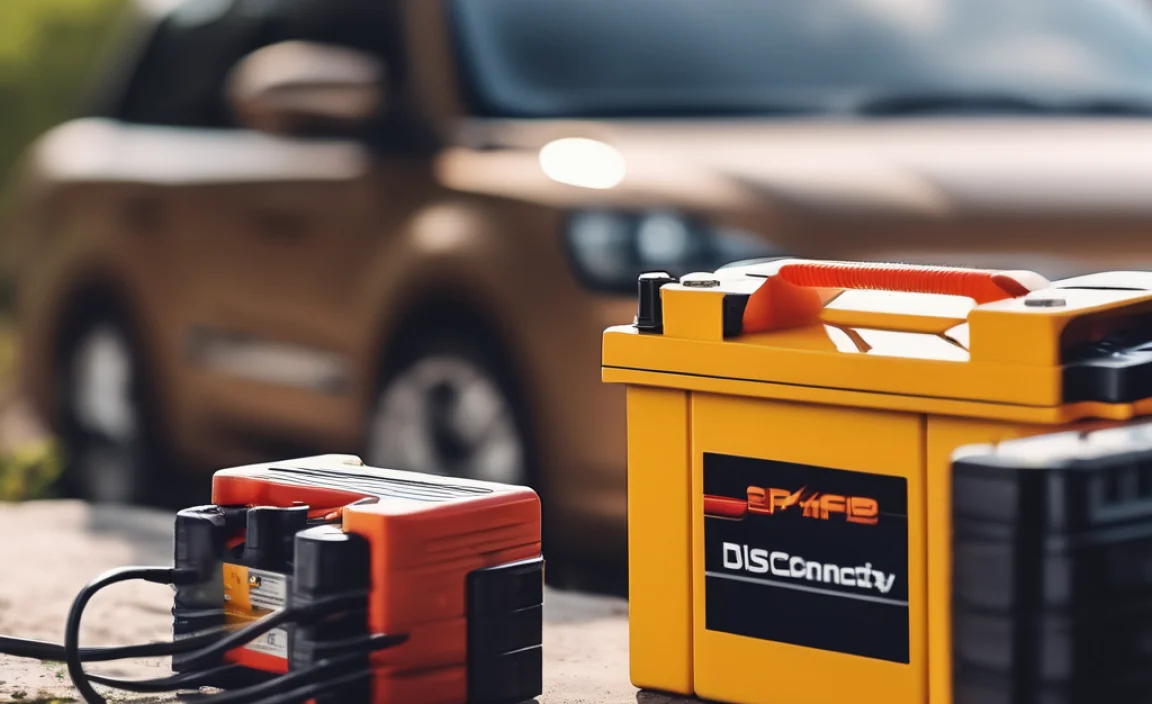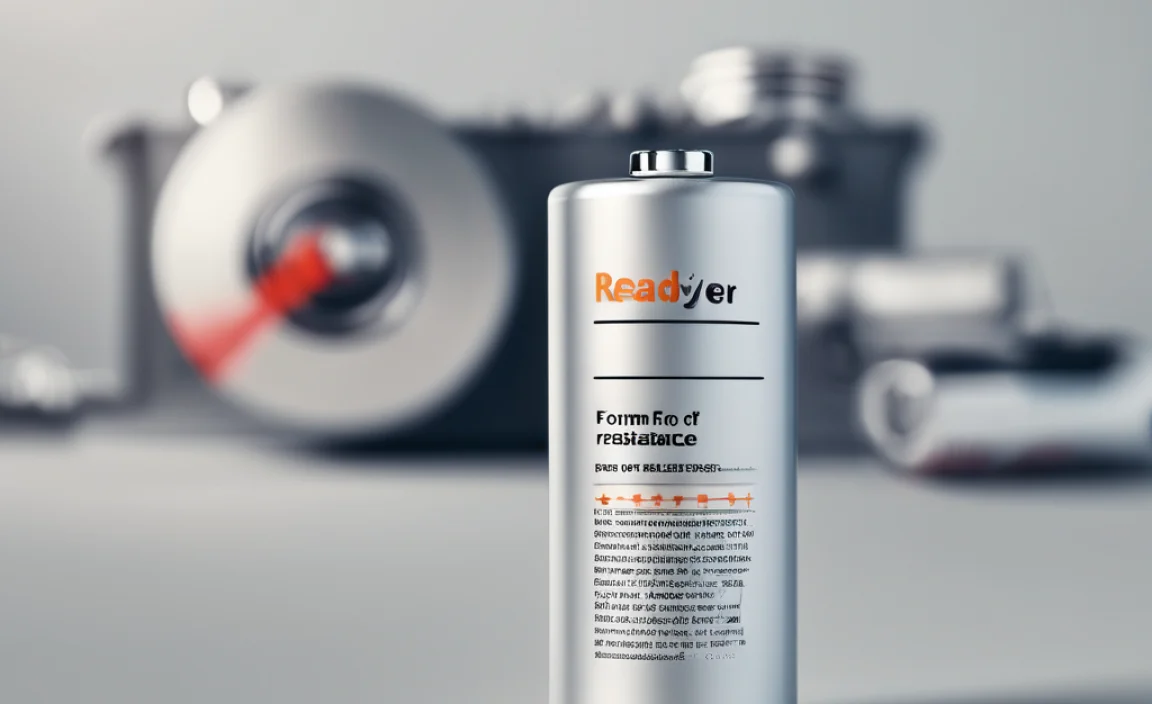**When planning a vacation, ensuring peace of mind regarding your vehicle is vital. Disconnecting your car battery can prevent unnecessary drainage and potential damage, particularly if your vehicle will be stationary for an extended period. Understanding the importance and method of disconnecting your car battery can save you from future headaches and expenses.**
Disconnecting your car battery before going on vacation can be a crucial step in maintaining your vehicle’s health. This precautionary measure helps prevent battery drainage, which could otherwise leave you with a dead battery upon your return. Understanding why this step is necessary and how to execute it properly not only prolongs your battery life but also aids in avoiding potential inconveniences.
Key Takeaways
– **Battery Drain Prevention:** Disconnecting avoids unnecessary power usage.
– **Extended Battery Life:** Reduces the chance of battery deterioration.
– **Security Measures:** Enhances vehicle security by disabling power.
– **Cost-Efficiency:** Prevents the need for immediate battery replacement.
– **Peace of Mind:** Ensures the vehicle will start smoothly post-vacation.
What is Disconnect Car Battery for Vacation?

Disconnecting a car battery involves removing the battery cables from the battery terminals, effectively cutting off the power supply to the vehicle. This step is particularly useful when planning a vacation, as it prevents battery discharge, especially during long periods of inactivity, thereby ensuring your vehicle remains in good condition.
Reasons for Disconnecting
– **Battery Discharge Prevention:** Idle cars can drain batteries due to electronic systems.
– **Avoids Damage:** Prevent potential damage caused by battery leaks or voltage drops.
– **Maintenance:** Keeps the vehicle’s electrical system in optimal condition.
– **Security Enhancement:** Disables electronic systems, reducing theft risks.
– **Cost Reduction:** Avoids unnecessary expenses related to battery replacement.
Disconnecting the car battery ensures the vehicle’s electrical systems remain intact and functional upon your return, offering both security and cost benefits.
Why Disconnect Car Battery for Vacation is Important?
Disconnecting your car’s battery during an extended absence is vital for maintaining vehicle health and avoiding unpleasant surprises. By doing so, you ensure the vehicle’s electronic systems and battery remain in prime condition, preventing potential issues associated with long periods of inactivity.
Benefits
– **Protection from Power Drain:** Saves battery life by halting unnecessary power consumption.
– **Prevention of System Failures:** Keeps electronic systems from malfunctioning due to low power.
– **Reduced Security Risks:** Disabling the battery can deter theft.
– **Cost Savings:** Extends battery life, delaying replacement needs.
– **Enhanced Vehicle Longevity:** Prolongs the lifespan of your vehicle’s electrical components.
By disconnecting the battery, you not only safeguard against battery drain but also enhance the overall security and longevity of your vehicle’s systems.
Step-by-Step Guide to Disconnect Car Battery for Vacation
Step 1: Gather Necessary Tools
– **Safety Gear:** Wear safety gloves and goggles.
– **Wrench or Socket Set:** Essential for loosening battery terminals.
– **Terminal Cleaner:** For cleaning corrosion if present.
Ensure you have the right tools for safely disconnecting the battery without causing damage to the terminals or other components.
Step 2: Locate the Battery
– **Identify Battery Location:** Typically under the hood or in the trunk.
– **Check for Cover:** Some batteries have protective covers that need removal.
Knowing the battery’s exact location is crucial to access it easily without unnecessary disassembly.
Step 3: Disconnect the Negative Cable
– **Loosen Negative Terminal:** Use a wrench to loosen the nut.
– **Remove Cable:** Carefully lift the cable away from the terminal.
– **Secure Cable:** Tuck the cable away to prevent accidental contact.
Always disconnect the negative terminal first to prevent electrical shorts and potential damage.
Step 4: Disconnect the Positive Cable
– **Loosen Positive Terminal:** Use the wrench again.
– **Remove Cable:** Gently lift and secure away from the battery.
Removing both cables ensures complete disconnection, preventing any power flow.
Step 5: Secure and Store Parts
– **Cover Terminals:** Use terminal covers or a cloth to protect.
– **Store Tools Safely:** Keep tools in a designated space for easy access later.
Storing parts and tools safely prevents loss and preserves the integrity of the battery terminals.
Alternative Methods / Tools
Battery Maintainer
– **Connect to Maintainer:** Keeps battery charged.
– **Automated Control:** Prevents overcharging.
– **Easy to Use:** Plug and play design.
A battery maintainer provides an ideal alternative for those who prefer not to disconnect completely, maintaining battery life while preventing discharge.
Trickle Charger
– **Constant Charge Supply:** Keeps battery charged slowly.
– **Prevents Overcharging:** Smart systems control charge levels.
– **Simple Setup:** Easy connections to battery terminals.
A trickle charger can be used to maintain the battery’s charge, ensuring it remains ready for use without the need for disconnection.
Troubleshooting Common Issues
Corroded Terminals
– **Use Terminal Cleaner:** Apply to remove corrosion.
– **Scrub with Brush:** Gently clean terminals.
– **Rinse and Dry:** Ensure all residue is removed.
Corroded terminals can affect battery performance. Regular cleaning is essential to maintain connectivity and efficiency.
Stuck Cable Clamps
– **Use Lubricant:** Apply to loosen clamps.
– **Tap Gently:** Use a soft hammer to dislodge.
– **Wiggle to Remove:** Carefully loosen with hands.
Stuck clamps can be a nuisance but applying lubricant and gently tapping can ease removal without damage.
Advanced Techniques
– **Clean Install:** Remove old components and install fresh parts for optimized performance.
– **Voltage Optimization:** Adjust settings for optimal electrical flow.
– **Battery Health Monitoring:** Use tools to monitor battery condition and performance.
Advanced techniques ensure your vehicle remains in peak condition, maximizing battery life and system efficiency.
Prevention & Maintenance Tips
– **Regular Inspections:** Check battery condition monthly.
– **Terminal Cleaning:** Prevents corrosion and ensures good connectivity.
– **Backup Power Sources:** Use a backup battery for emergencies.
– **Consistent Battery Use:** Avoid long periods of inactivity.
– **Check Connections:** Ensure cables are tightly attached.
Regular maintenance and preventive measures significantly reduce the likelihood of battery-related issues, enhancing vehicle longevity.
**Real-Life Example:** **Jane, a frequent traveler, used a battery maintainer during her month-long vacation. Upon return, her car started without issues, saving her time and hassle.**
According to AAA 2024, 1 in 5 car owners experience battery failure due to prolonged inactivity.
Comparison of Battery Management Methods
| Method | Difficulty | Speed | Best For | Notes |
|---|---|---|---|---|
| Disconnect Battery | Moderate | Quick | Short to medium trips | Requires manual reconnection |
| Battery Maintainer | Easy | Continuous | Long-term storage | Prevents complete discharge |
| Trickle Charger | Easy | Continuous | Overnight charging | Prevents overcharging |
Conclusion
Taking steps to disconnect your car battery before heading on vacation can save you time, money, and potential frustrations upon your return. Whether you choose to disconnect manually or utilize tools like a battery maintainer or trickle charger, protecting your vehicle’s battery ensures its longevity and reliability.
Frequently Asked Questions
**Question 1: How Long Can a Car Battery Last Without Being Charged?**
**Answer:** Typically, a car battery can last about 2-3 months without charging, depending on the vehicle’s electrical load.
**Question 2: Is Disconnecting the Battery Safe for the Computer?**
**Answer:** Yes, but it may reset settings. Use a memory saver to avoid resets.
**Question 3: Can I Disconnect Just the Negative Terminal?**
**Answer:** Yes, disconnecting only the negative terminal is often sufficient.
**Question 4: Will Disconnecting the Battery Save Its Life?**
**Answer:** Yes, it prevents unnecessary power drain and prolongs battery life.
**Question 5: What’s the Difference Between a Maintainer and a Charger?**
**Answer:** A maintainer keeps the battery charged without overcharging, while a charger replenishes a depleted battery.
**Question 6: Can Corrosion Damage the Battery?**
**Answer:** Yes, corrosion can lead to poor connectivity and diminished battery performance.
**Question 7: How Can I Prevent Battery Drain?**
**Answer:** Disconnect the battery or use a maintainer during extended inactivity.
**Question 8: What Tools Are Necessary for Disconnecting a Battery?**
**Answer:** You need a wrench, gloves, and goggles for safe disconnection.
**Question 9: Does Cold Weather Affect Battery Life?**
**Answer:** Yes, cold weather can reduce battery efficiency and increase discharge rate.

